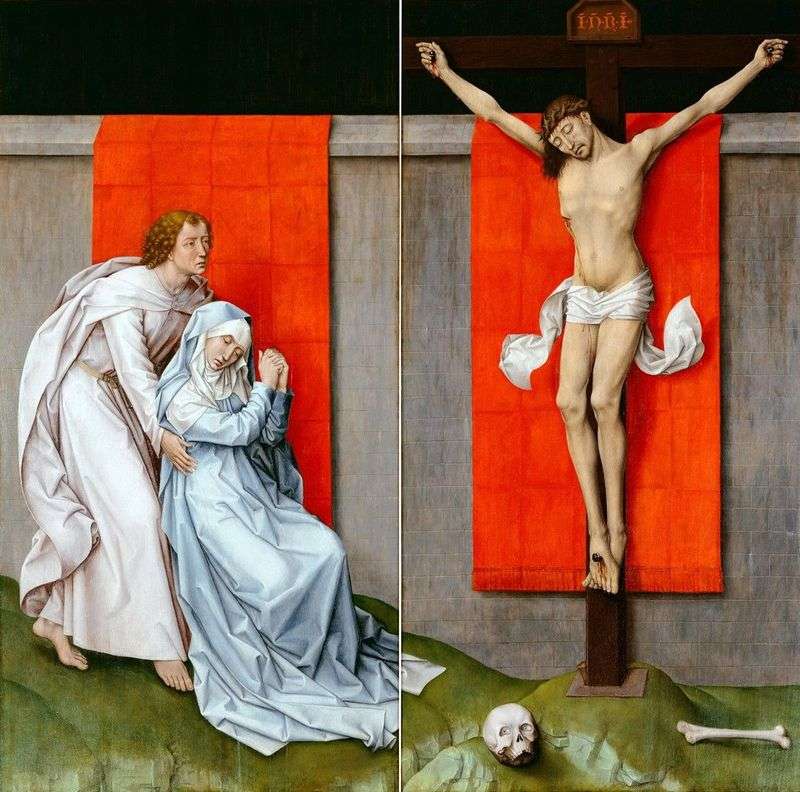
The work presented is one of the last major compositions by van der Weyden. This assumption is confirmed by highly stylized forms with sharply outlined contours, a reduction in the narrative aspect and the dating of the material. In the past, the picture was drawn up too hasty judgment based on the selection of colors and composition. Two flaps were to be placed side by side, as indicated by the continuation of the part of Mary’s garment on the right leaf. Hence the conclusion that the work was conceived as a diptych is similar to the Carniz court of Gerard David. Therefore, to consider the leaves as extreme sections of the altar and to assume the presence of the central part is completely erroneous. In the 40-ies of the XX century, the restoration of the work was undertaken on the basis of an incorrect analysis: the sky is a homogeneous dark blue,
Realistic elements of architecture, including moss on rocks and exposed moisture, were also considered to be later additions and removed. The work turned into an archaic and abstract picture with an empty space around the figures and with a strange, inharmonious palette. Fortunately, now these errors are corrected. In the diptych the traditional scene of the Crucifixion with the presence of St. John and Mary is divided into two parts to form separate components. They should be viewed as illustrations of the relevant biblical texts. The Virgin Mary faints from sorrow, seeing the death of Jesus. These events provide the salvation of mankind. The depth of her empathy gives her the right to also become the Savior of mankind.
In this work, this parallelism was first shown in two separate paintings for worship. This division of the two plots makes the viewer consider each leaf itself. The cross is depicted as small, and St. John and the Virgin Mary are on a hill. Thus, both actions have the same height, which emphasizes their equality. The skull and human bone pointed at the viewer are symmetrically located at the foot of the cross. These are the remains of Adam, according to the legend buried at the place of Christ’s death. Lowering his head, Jesus looks at the skull of the first person from whom it all began. Figures are located in front of a damp stone wall. The dark sky above it, as well as the earthquake indicates the moment of Jesus’ death. The traditional red and blue robes of St. John and the Virgin Mary are given light pink and milky blue shades, which makes them detached from the earthly reality. The saturated red color of the hanging material isolates the figures, makes them look like sculptures in the symbolic space of the Passion. In general, the figures above the altar or near the wall in the chapel were often located on the background of a cloth with ironed folds.
All this is strongly reminiscent of Fra Angelico’s frescoes familiar to the master in the cells of the Dominican monastery of San Marco in Florence. Indeed, van der Weyden maintained close relations with some of the Cartesian monasteries, since his son became a monk of the monastery in Guerne. It is known that van der Weyden painted another picture of the Crucifixion for another monastery in Sheute. In this work full of emotions, almost baroque figures of St. John and Mary on the sides of the cross are dressed in monastic robes and are also placed on the background of the blood-red matter spread out. However, there is no other reason to believe that this diptych was written by van der Weyden to commemorate the adoption of his son in the Cartesian monastery in Guerne. Nevertheless, the theme fully corresponds to the world outlook, rituals and the closed world of these monks. Since the work is in Spain,
But, like the Crucifixion of the Sheuth and the Crucifixion of Louvain, it could also be acquired from the Netherlands monastery by one of the Spanish monarchs, for example, Philip II. The diptych demonstrates such an obvious unity of style and continuity throughout its creation from the stage of drawing to the completed work, that the authorship of one artist is beyond doubt. Several ascetic sternness of the images seems typical of the later works of van der Weyden. This is one of the most original of his compositions, a testament to the creative freedom of an aging master. Here, the tendency to abstraction ceases. It may seem absurd, but try to compare the asceticism and the magnificent performance of the pale figures of John and Mary under the dark blue midnight sky with a stylized sensual face emerging from the darkness in the Woman’s portrait created in the same period. Exaltation and sensuality, pacified passion, Catholic surrealism. The cross, which had previously towered in space, seems deeply submerged in the earth. Christ rises just above the low wall. The ends of the loincloth are directed downwards.
In the picture, there is complete calm. The red shroud hangs on the bare damp wall of the Cartesian garden and gives ritual grandeur to the crucifix scene. The corner of the faded mantle of Mary becomes an emotional and formal link with another leaf, on which the Blessed Virgin herself is depicted – a ghostly weightless figure, a symbol of eternity against the background of the silhouette of John. Her posture is an artificially obtained result of successive stages of “purification” of this metaphor-abounding topic. The lace of John is purposely clarified, but on it you can still discern the traces of a once-bright red color. Elastic folds indicate a sharp previous movement. Thus, the figures become clear illustrations of their own history.
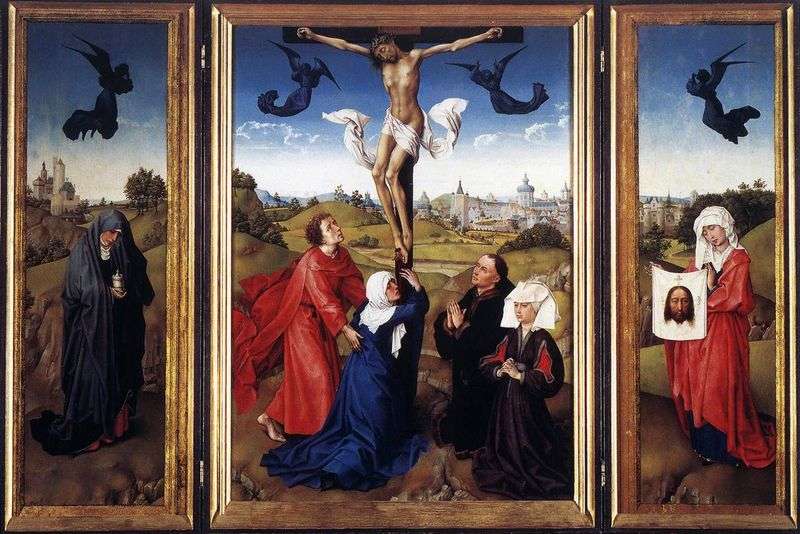 Triptych “Crucifixion” by Rogier van der Weyden
Triptych “Crucifixion” by Rogier van der Weyden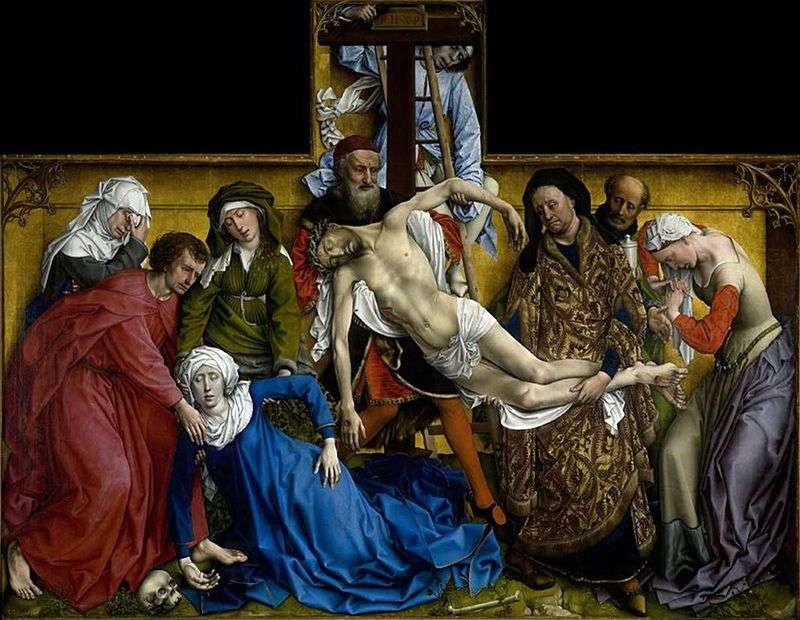 Cake Removal by Rogier van der Weyden
Cake Removal by Rogier van der Weyden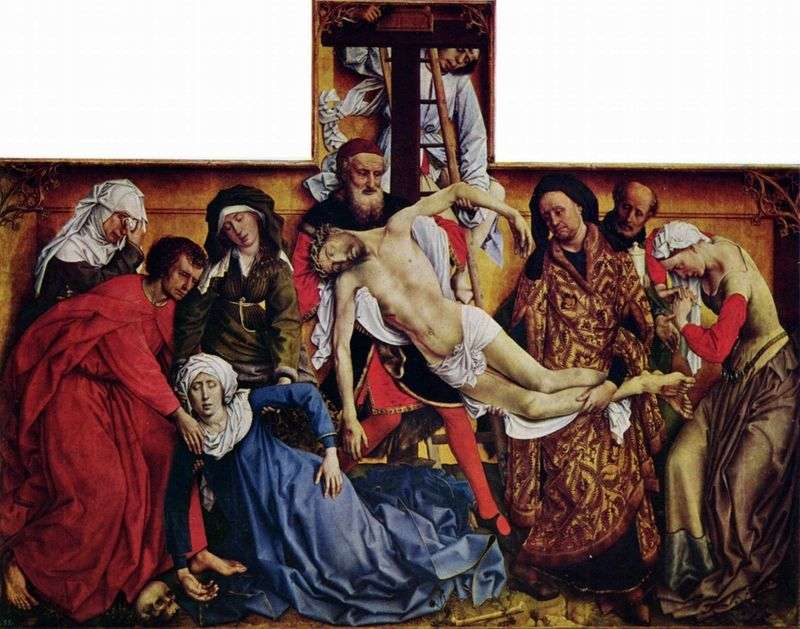 The removal from the cross by Rogier van der Weyden
The removal from the cross by Rogier van der Weyden Triptych of Marriage by Rogier van der Weyden
Triptych of Marriage by Rogier van der Weyden Altar of St. John the Baptist by Rogier van der Weyden
Altar of St. John the Baptist by Rogier van der Weyden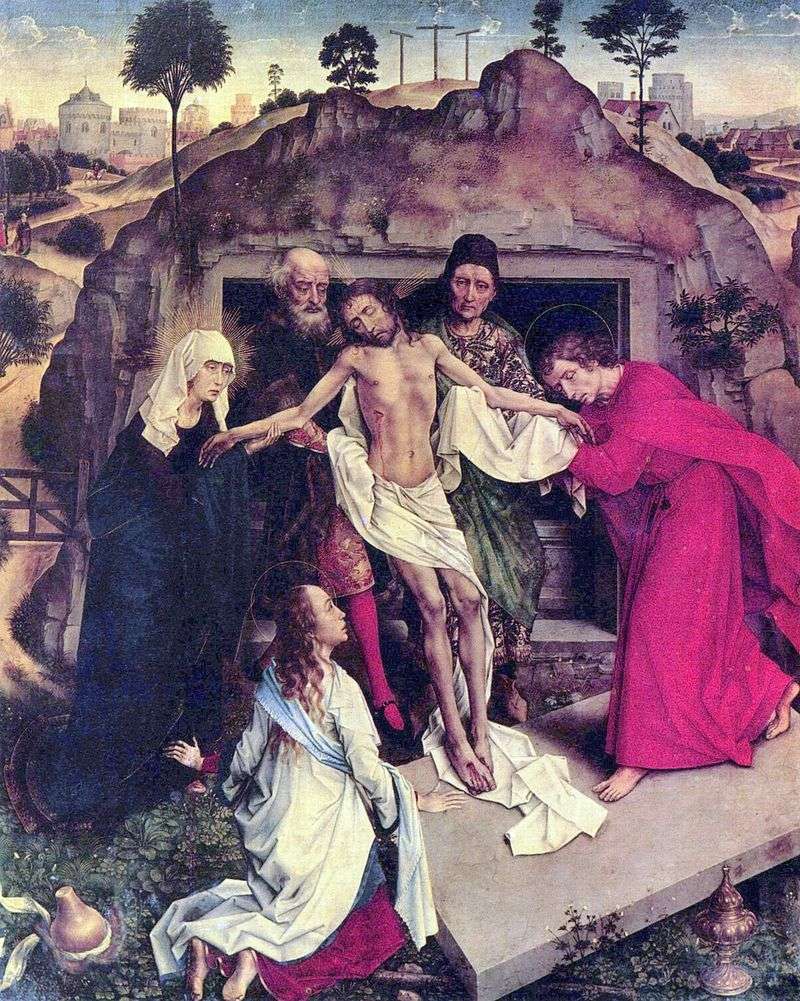 The situation in the grave by Rogier van der Weyden
The situation in the grave by Rogier van der Weyden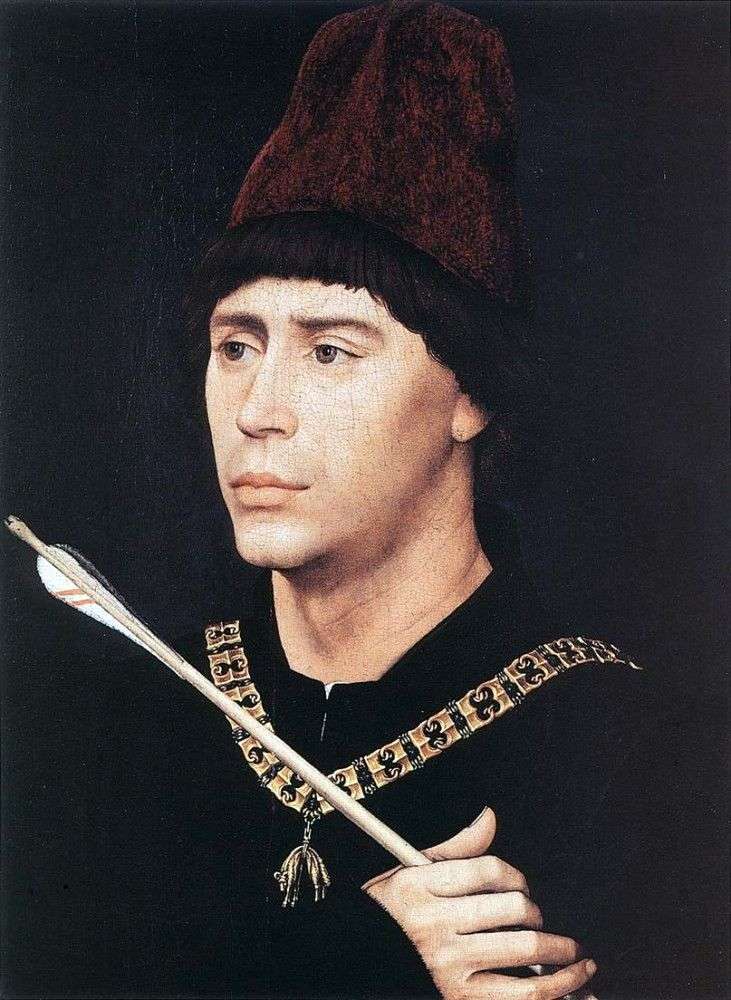 Portrait of Antoine of Burgundy by Rogier van der Weyden
Portrait of Antoine of Burgundy by Rogier van der Weyden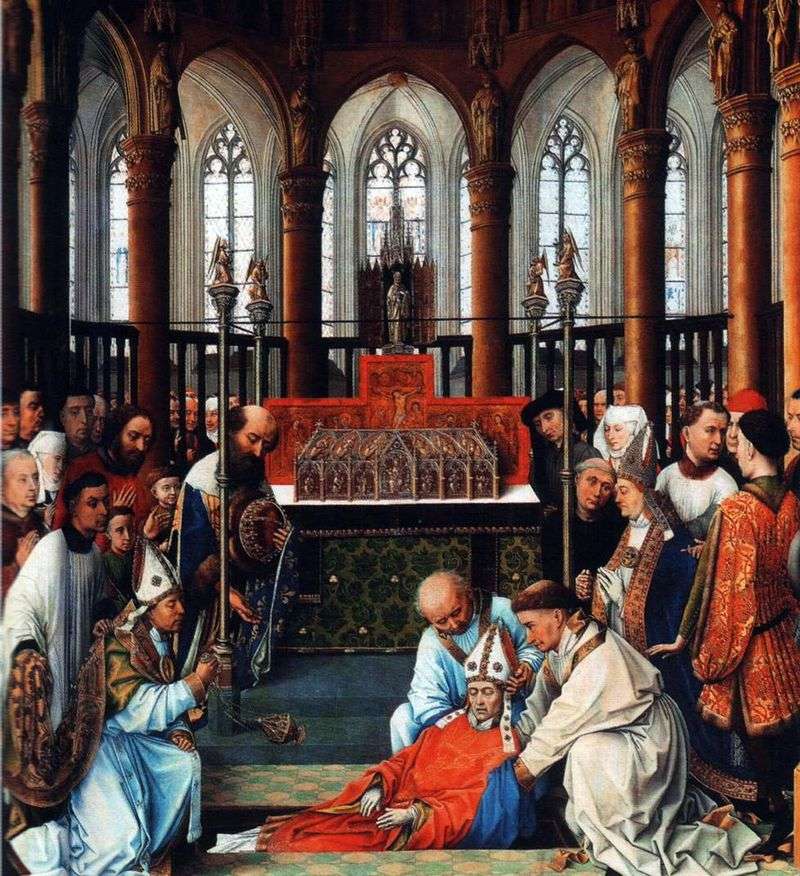 Discovering the Relics of St. Hubert by Rogier van der Weyden
Discovering the Relics of St. Hubert by Rogier van der Weyden